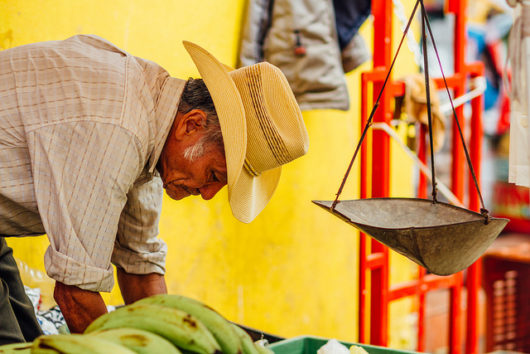Top 10 Facts About Living Conditions in Colombia

Colombia is well-known for its coffee plantations and scenic mountains and beaches, but also for harboring conflict and political unrest. After 50 years of civil war, the country has finally entered into a peace agreement and is now in a post-conflict period of reconstruction. Because travel to the country was considered unsafe until quite recently, there are many aspects of Colombia that are widely unknown and most foreigners have little concept of what life there truly is like. Below are the top 10 facts about living conditions in Colombia.
Top 10 facts about living conditions in Colombia
- Colombia has a population of over 47 million people, with 23.6 percent of the population residing in rural areas. Colombia is ranked the seventh most inequitable country in the world, with almost 63 percent of national incoming going to the wealthiest 20 percent of the population.
- After 50 years of conflict, President Juan Manuel Santos signed a peace treaty with the Revolutionary Armed Forces of Colombia (FARC), winning himself the Nobel Peace Prize in 2016. This was the first major step toward ending violence in the region, creating economic growth and altering the global perception of Colombia.
- Due to regional conflict and violence, many locals were forced to leave their homes. Since 1985, 5.9 million people have been displaced, with the majority being women and children. After Syria, Colombia has the second largest population of internally displaced persons. As a result, 5 percent of the population has been left homeless, and 30 percent of Colombian families (3.8 million) do not have adequate housing.
- Displacement has led to the formation of informal settlements on the outskirts of major cities. These communities are characterized by a lack of access to schooling and health care, unsafe home construction, houses built on land that is not owned by the homeowner and limited employment opportunities. Groups like Habitat for Humanity are working to improve conditions by assisting with housing construction and community infrastructure, as well as promoting local engagement and providing training workshops.
- While water infrastructure is commonplace in urban cities, many Colombians continue to struggle for access to clean water and proper sanitation systems. One in four individuals residing in rural areas lacks access to drinking water, which is considered a basic human right.
- Despite recent economic improvements that make the country to have one of the world’s emerging economies, poverty remains a prevalent issue, with 34 percent of the population living below the poverty line. This is a result of multiple factors, including low-income, high unemployment rates (10 percent of the population) and residual impacts of conflict and displacement.
- Agriculture has become a government focus and is seen as an opportunity to improve the economy, lower unemployment rates and connect Colombia with the global market. The agricultural sector is responsible for almost 7 percent of the country’s GDP and offers employment to over 15 percent of the population. With less than 30 percent of its arable land currently being used to produce crops, there is significant room for growth in this industry.
- Despite being rich in natural resources, Colombia has high rates of food insecurity that affects 43 percent of the population. Chronic malnutrition impacts over 13 percent of children under the age of five and individuals that have been displaced or belong to an ethnic minority group are more likely to suffer.
- The World Health Organization (WHO) has ranked Colombia in 22nd place for their health care. In comparison, the United States ranks number 37. However, access to these resources is limited for those living outside of urban areas.
- With its scenic, diverse landscape and rich culture, Colombia has recently become a popular tourist destination for travelers around the world. The New York Times ranked Colombia in the second place for the touristic destination in 2018. This offers the opportunity for growth in the tourism industry and a chance for Colombia to share its history, resources and traditions with the world.
These top 10 facts about living conditions in Colombia demonstrate that the country has come a long way since creating peace in the region, but is still dealing with many socioeconomic issues. Continued efforts by government and advocacy groups offer hope for security and growth in the upcoming years.
– Georgia Orenstein
Photo: Flickr
